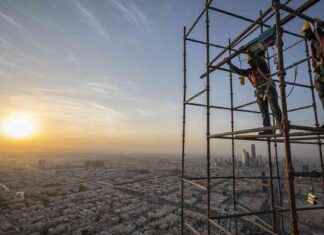Ignoring warnings from her government, American Adair Margo took a seat with her grandchildren on board the “Chepe”, the intrepid tourist train that climbs to the Sierra Madre and the great canyons in the northwest from Mexico.
The “Chihuahua-Pacific” is one of the most beautiful train journeys in the world, according to National Geographic.
On paper, the excursion may give diplomats or security experts a cold sweat, since the trip begins in Los Mochis, one of the strongholds of drug trafficking.
It was there that Sinaloa Cartel founder Joaquin “El Chapo” Guzman was arrested in 2016.
He has since been serving a life sentence in the United States.
Seven years later, Washington still asks American nationals not to go to the state of Sinaloa and to avoid the neighboring state of Chihuahua, which the train connects to the Pacific.
Truth be told, Adair Margo, 69, doesn’t care.
“Life is full of dangers”, says philosophically this Texan living in El Paso, a city on the border with Mexico.
“On a trip like this, you are not going to put yourself in the middle of the war between the drug cartels,” adds the grandmother, accompanied by her seven grandchildren aged two to twelve. .
With a capacity of several hundred people, the Chepe circulates on a single track, which goes from the Pacific Ocean to the Sierra of Tarahumaras passing through the “Barranca del cobre” (the copper canyon), deeper than the canyons from neighboring Arizona.
The Chepe is one of the rare survivals of the railway revolution which had begun as in Europe in the 19th century, before a slow decline.
The year 2023 could be the year of the rebirth of rail, since President Andres Manuel Lopez Obrador has promised to inaugurate in December the first section of the “Maya train”, his great contested project of more than 1,500 km through the Yucatan Peninsula.
“It’s another way to discover Mexico,” says Christophe Schild, a 55-year-old Frenchman, met on board the Chepe train with his partner and their 20-year-old twins.
“Of course, many people know Cancun or Acapulco. But we want to discover the country off the beaten track, so this train is the opportunity”.
Leaving Los Mochis, the train crosses the fertile valleys of Sinaloa, dotted with cornfields.
Then the convoy climbs towards the Sierra Madre Occidental which overlooks the canyons, over 37 bridges and 86 tunnels.
Little by little, the rivers give way to waterfalls and the cacti recede in front of the pines of the mountains. At an altitude of 2,260 m, the belvedere of El Divisadero overlooks the canyon of Urique, with a depth of 1,800 m.
“It’s a long trip but it’s worth it. We’ve had the chance to do it several times and we never get tired of it,” says Flor Corrales, a 61-year-old Mexican doctor who travels with her husband and son. .
After nine hours of travel, the train arrives at Creel station, its terminus, a sort of capital of the Sierra de Tarahumaras.
The mountain is home to the Raramuri (or Tarahumaras) community known for its peyote ritual – a hallucinogen that inspired the French poet Antonin Artaud – and its endurance skills.
Tourism in the Sierra came to a halt in August 2008, when 13 locals – including a baby – were massacred by gunmen.
“The city began to die,” recalls Jesuit Father Javier Avila, a key figure in the Sierra. “No tourists came anymore”.
After a sluggish recovery, tourism was threatened again in 2018 when an American hiker was murdered by drug traffickers in the Copper Canyon.
In June 2022, two Jesuit “brothers” of Father Avila and a guide were killed near Urique by a small local trafficker, an alleged collaborator of the Sinaloa Cartel in the area. The alleged assassin was found dead in turn in March.
“The armed groups, so far, have respected the tourists. They don’t rob them. They don’t attack them,” says Father Avila.
“I’m not suicidal. I don’t want my grandchildren to be hurt,” concludes Adair Margo, the American grandmother who seems to have understood everything about the local spirit. “But I want them to have life experience and you can have a lot of experiences in Mexico.”
07/28/2023 20:56:26 – Creel (Mexico) (AFP) – © 2023 AFP






